Close
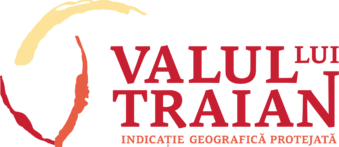
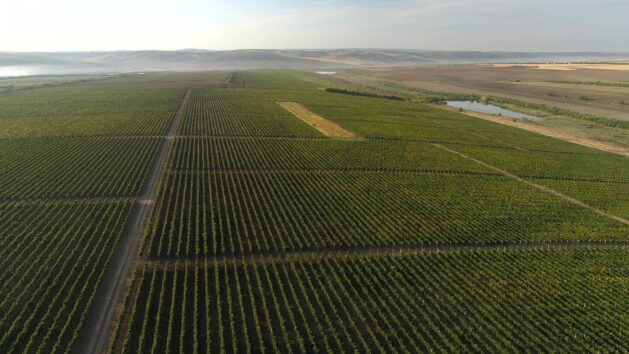
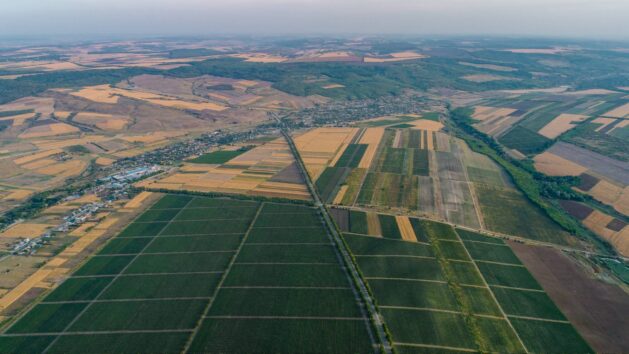
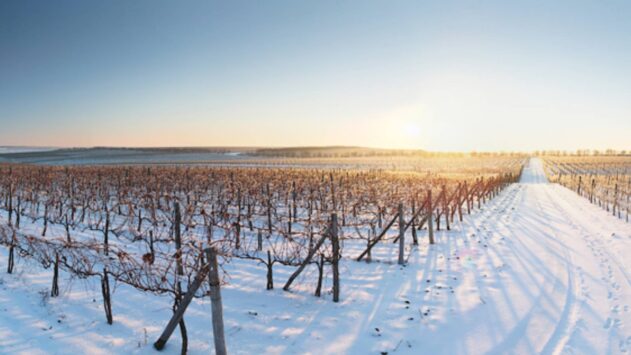
Valul lui Traian PGI

This is a wine region delimited for the production of wine with protected geographical indication (PGI), located in the south of the Republic of Moldova. Over time it acquired specific environmental features favourable for the production of wines with strong, specific, typical characteristics of this region. Valul lui Traian wine region includes 3 sub-regions with specific soil and climatic peculiarities: the Bugeac Plain, the Tigheci Forests and the Prut River Terraces. The region extends its horizon over an area of 43203 ha of vine-yards. The territory of the region falls into Eastern Europe and Mediterranean and in the forest covered steppe with fluffy oak and in the xerophytic steppe with fescue-black and Austrian wormwood.
The region includes 7 administrative districts: Leova, Cantemir, Cahul, Comrat, Ceadâr-Lunga, Taraclia and Vulcănești.
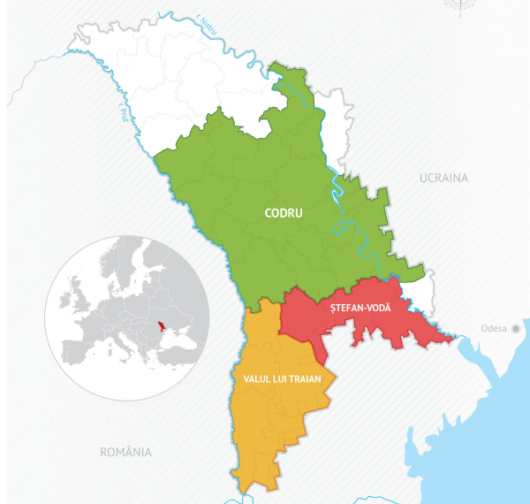

Altitude
5 – 311 m. above the sea level

Sunny days a year
310 – 320

Rainfall, annual average
450 – 550 mm.

Sum of active temperatures
3000 – 3450 °C
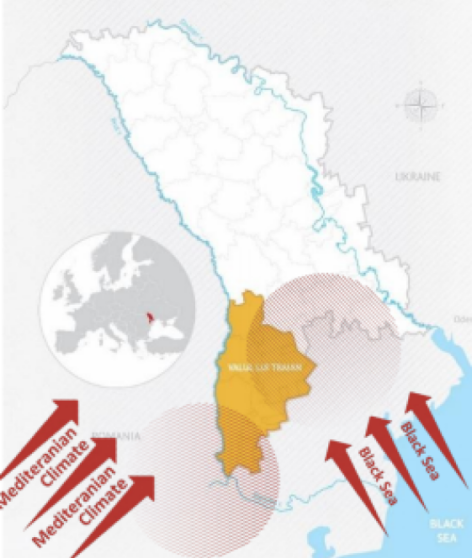
Climate
Valul lui Traian wine region has a temperate-continental climate with influences from the Black Sea. The geographical location of the “Valul lui Traian” PGI area places it into zone III of soil and climatic conditions, characterised by insufficient humidity. According to statistical data, the amount of precipitation varies from 450 mm to 550 mm, the average annual temperature of atmospheric air for zone II is 9.5–10.0º C, and the sum of the ac-tive temperatures makes 3200 - 3450º C; the duration of the vegetation period with temperatures higher than 10º C is 179 - 187 days. The number of recorded sunny days makes 310-320 per year. The specific climate offers significant insolation with high temperatures, but they are balanced by the Black Sea breeze and also by the shade of the Tigheci Forests. It is more favourable for cultivation of the black grain varieties Cabernet Sauvignon, Merlot, Saperavi and Fetească Neagră planted here in proportion of 60%. Among varieties with white beans, the Sauvignon Blanc, Chardonnay and Muscat Otonel varieties predominate.
Landscape
This region is characterised by increased fragmentation of the landscape and contains hilly regions, deep valleys, and slopes with different degrees. The Prut cross-border River and the inland rivers Ialpug and Cahul with their tributaries flow on the territory of the region. The altitudes vary from 5 to 311 m, the average elevation making 114.3 m. The largest part of the territory (77%) has a 1º to 10º slope, 49.2% of 1º - 3º slopes, and the rest (22.8%) have slopes of 3º - 5º . In terms of exposure, the eastern (20%), western (19%), south-western (13%) and south-eastern (12%) slopes predominate in the region. The stratified geological structure formed in this region in the Quaternary and Tertiary period, represented by sediments from the Miocene epoch. Due to this fact, the geological layers are mainly represented by clays with layers of sand, as well as by coastal marine sediments of shallow depths and by the delta sediments with sands, sandstones, and clays. The quality of the wines is influenced by the presence here of tertiary red de-posits, rich in microelements. This is particularly noticed in the Ciumai, Vulcănești and Etulia micro-zones. By particle size metric composition of the parent rocks predominates clay loams and a layer of clay.
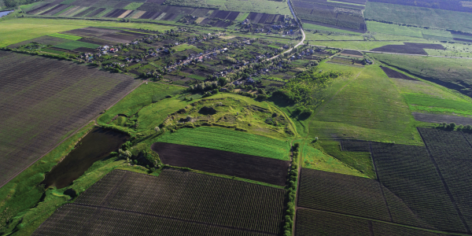
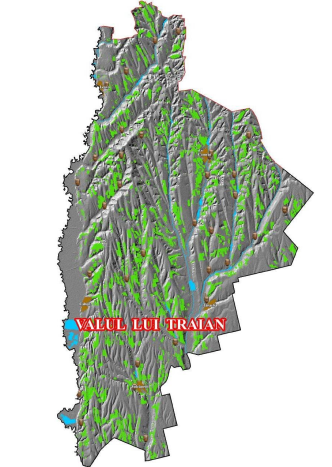
Soil
The soil and climatic conditions analysis indicate that the territory falls into the area of the Southern Plain Steppe. The largest part of this region area is occupied by the Steppe of the South Bessarabian Plain (71%) with common and carbonate black soil (chernozem). Followed by area by - the xerophytic forest-steppe of the Southern Hilly Plain (18%) – which falls into the category of ordinary and leached black soils (chernozems). In the Sil-vosteppe of the Tigheci hills the leached chernozems, xerophytes and soft grey soils (11%) are present. The dominant soils are chernozems, present in 78% of the territory, the carbonate subtype is prevailing - 38%, the common - 31% and the leached - 6%. In terms of the textural composition the loamy-clay soils predominate, constituting 47%. Clay is in second place, constituting 34%, followed by the clay-loamy type with 1%.
The soil cover of the Bugeac Plain region is composed mainly of ordinary and carbonate chernozems. In the lower part of the Tigheci Hills area, the soil cover is composed of leached chernozems, xerophytes and soft grey soils. The carbonate subtype prevails among the chernozems group.
The typical character of wines
The following wine products can be included in the category of the “Valul lui Traian” PGI: dry white wines, roses, reds, sparkling wines, wines from over ripe grapes and raisins and liqueur wines. Black grained vines that are grown on the slopes of the region, ac-count for 60% of the total area recorded for the production of wine products with PGI, while the grained vines are grown on 40% of this territory. Cabernet Sauvignon, Merlot, Sauvignon Blanc, and Chardonnay are the predominant varieties here.
The white wines are fine and lively with a complex and elegant bouquet with nuances of fresh fruit and a structured and balanced taste.
The rose wines have a pale pink colour with raspberry and poppy petal reflections and have a bouquet of fresh fruit aromas on a mineral background. Their taste is soft, fruity, fresh, and cool.
The red wines from this region have a more intense colour than wines from other regions, ranging from pomegranate red to cherry red; have fruity aromas and a well-structured, round velvety taste and a long aftertaste.
Sparkling wines are characterised by greenish to straw, pale pink and ruby-red colour depending on the variety used in the blends. They have an extremely fruity and floral bouquet (vine flower) and a round, ample and distinct taste; specific for these wines is an effervescence, abundant foaming. The Tigheci Forest sub-region is the most favourable for the production of sparkling wines.
This region is also renowned for the production of exceptional liqueur wines, the particu-lar micro-zones being Trifești, Ciumai and Plopi. Liqueur wines have a rich bouquet, the whites being characterised by aromas of nutmeg, dried fruit, jam, honey, and the red wines by plums and chocolate nuances.
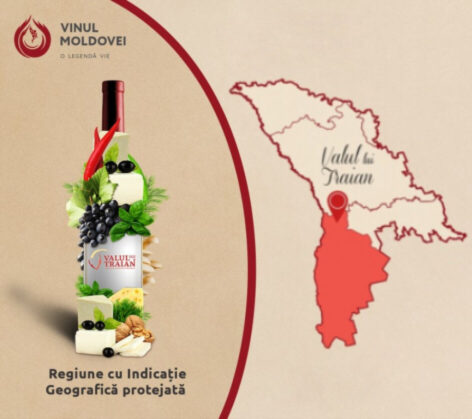
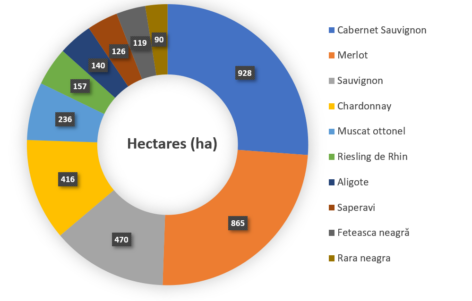
Wineries in the Valul lui Traian PGI region
/ Follow us
/ Subscribe to news
/ Wineries / Tourism / Wine History / About ONVV / News
MD-2004, Republica Moldova, mun. Chișinău, str. Sfatul Țării, 59
office@wineofmoldova.com, tel. 022 105 560
Copyright © Oficiul Național al Viei și Vinului (ONVV). All rights reserved. Privacy Policy